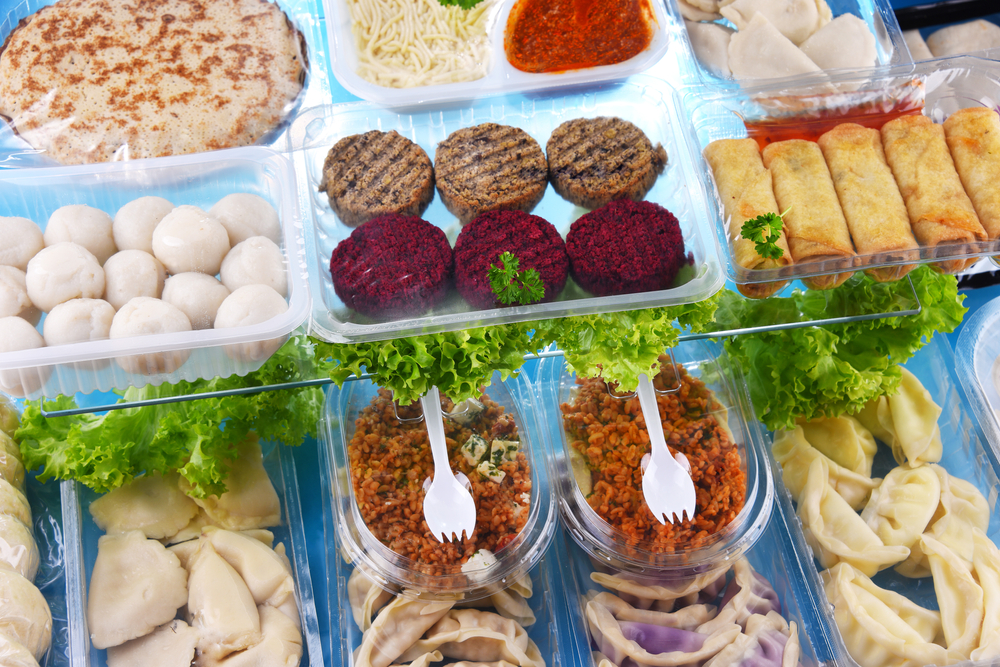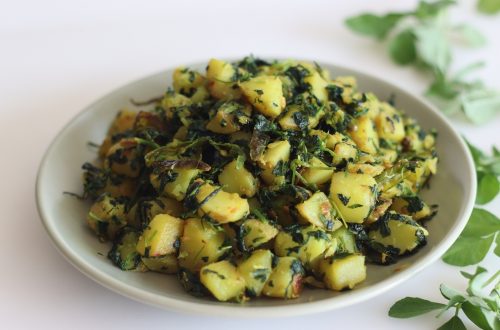
Trending Now: Small Is Beautiful
Have you noticed recent changes at your grocery store? In the past year, mine has installed a new case in the meat and deli section where customers can buy individual meals prepared for cooking. You have your choice of meat, chicken, and vegetables. And my local farm market, where I get my fresh vegetables and meat, has been offering packages of marinated meats, ready to cook. What’s going on here?
You’re seeing an adaptation by retailers to changing food habits. Many of us are time-sensitive and looking for ways to simplify our lives. Post-Covid, American consumer food habits are moving to simplification, smaller portions, and internationally inspired flavors, according to the annual “Protein Profile” report issued by global food and agriculture company Cargill. Ease and time savings are big drivers. These days, one of every six meals is “heat and eat.” And there’s been a five billion increase in orders for digital food service since 2019.
Convenience
Younger consumers, especially, prefer convenience. They buy deli-prepared, ready-to-eat meat and poultry; cut and marinated meat; and fully-cooked frozen meat and poultry. Moreover, they buy fully cooked meals that just require reheating, or meal kits or meat and poultry in microwaveable or oven-ready packages.
Most consumers will buy plant-based proteins for health and sustainability, but most of us are still not satisfied with plant-based meats, Cargill found. Consumers want better flavor, value, and nutrition.
Smaller households
Grocery stores in the U.S. are adapting to smaller household sizes. About two-thirds of all households of one or two people are shopping with shorter lists because the ingredients for a two-person meal look different from those for a larger family. For stores, that means smaller packaging sizes and even appliances. Two-person households can think an oven is overkill, so 76% use an air fryer (up from 39% in 2019) to prepare meat and poultry. In the future, expect to see additional cooking instructions and meal inspiration when it comes to these smaller cooking appliances.
Since more people (38% of all shoppers) are buying meat in bulk, using freezer-ready packaging is a key for retailers. I can attest that my local grocery store has a growing section of packaged freezer meals. If you’re freezing your own, use a vacuum sealer to prevent drying and freezer burn, and make sure to divide the food into serving portions for easier thawing.
Diverse flavors
A major trend to my liking is the desire for diverse flavors. Global flavors are ascending, with Latin and Hispanic foods leading the way. Cargill says that while people have always connected food to comfort and exploration, the concept of comfort food is evolving. The most diverse generation – Gen Z – shows a clear preference for international cuisine; 58% have eaten globally inspired foods in the past week.
Cargill says get ready for a new trend called “chaos cooking” in which two cuisines are mashed together in one dish. Korean and Mexican are an early entry. As examples, Cargill cited a recipe for bulgogi steak enchiladas with gochujang mole and Korean chicken elote with kimchee aioli and crispy onions. When you think about experimenting with meals and meal planning, an easy way to change up a flavor profile is to try adding different sauces – maybe a chili lime or chimichurri – to the protein or overall dish. It’s a long way from tacos, but it could be a taste sensation.
Value redefined
What’s happening, Cargill says, is that food behaviors are changing, and you and I are redefining value in what we eat. We’re eating at home more (86% of the time, and 69% say they are eating out less often). An incredible 87% of people are trying to recreate restaurant meals at home. When looking at value, higher-income consumers choose more premium items in grocery stores to replace the restaurant experience, and lower-income customers buy fewer items, looking for deals and shifting to nonperishables to avoid food waste.
We’re all trying to stretch that food dollar, so watch for retailers to find ways to communicate savings and value, and expect food brands to explore new pricing strategies. As for us consumers, we’re becoming more comfortable with private-label items and more creative in buying, portioning, and using the food we buy.
Please click on the title to view the photos and comment online. On the Website, you can read past blogs, search for recipes, and browse. You can log in and comment at the end of the blog to share your thoughts and start a discussion, or suggest a topic for Farmboy in the Kitchen.
If you’d like to share the blog, click on the Facebook icon or one of the others. Thanks!





4 Comments
Tracy May
Unfortunately the growth in convenience over the years has increased plastic waste. Positive news on that front in an article from sensXPERT “Global Plastics Material Trends in 2024”:
“The plastics industry is undergoing a profound transformation driven by a realignment of customer demands and preferences. As consumers become increasingly aware of environmental and sustainability issues, they are seeking products that align with their values and contribute to a more sustainable future.
A 2023 study by NielsenIQ found that 73% of consumers globally are willing to pay more for sustainable products. This shift is evident in the growing popularity of eco-friendly brands and the increasing demand for products made from recycled materials.
The plastics industry is responding to these evolving customer preferences by developing innovative materials and processes that minimize environmental impact, enhance recyclability, and promote circularity throughout the product lifecycle.”
Robin Lawson
This is so heartening. Thank you for sharing. I have just discovered the Zero Waste Store. In my mind, the best impact of shopping at these places and buying plastic-free products is sending the message that this is what consumers demand. zerowastestore.com
Tracy May
Thanks for sharing Zero Waste Store. Will definitely be buying stuff from them. Have my eye on their organic cotton sheet set. Bought bamboo sheets a few years ago. Love sleeping on them but they can only be washed in cold water on delicate. They got dingy real fast.
Tracy May
Thanks for sharing Zero Waste Store. Will definitely be buying stuff from them. Have my eye on their organic cotton sheet set. Bought bamboo sheets a few years ago. Love sleeping on them but they can only be washed in cold water on delicate. They got dingy real fast.